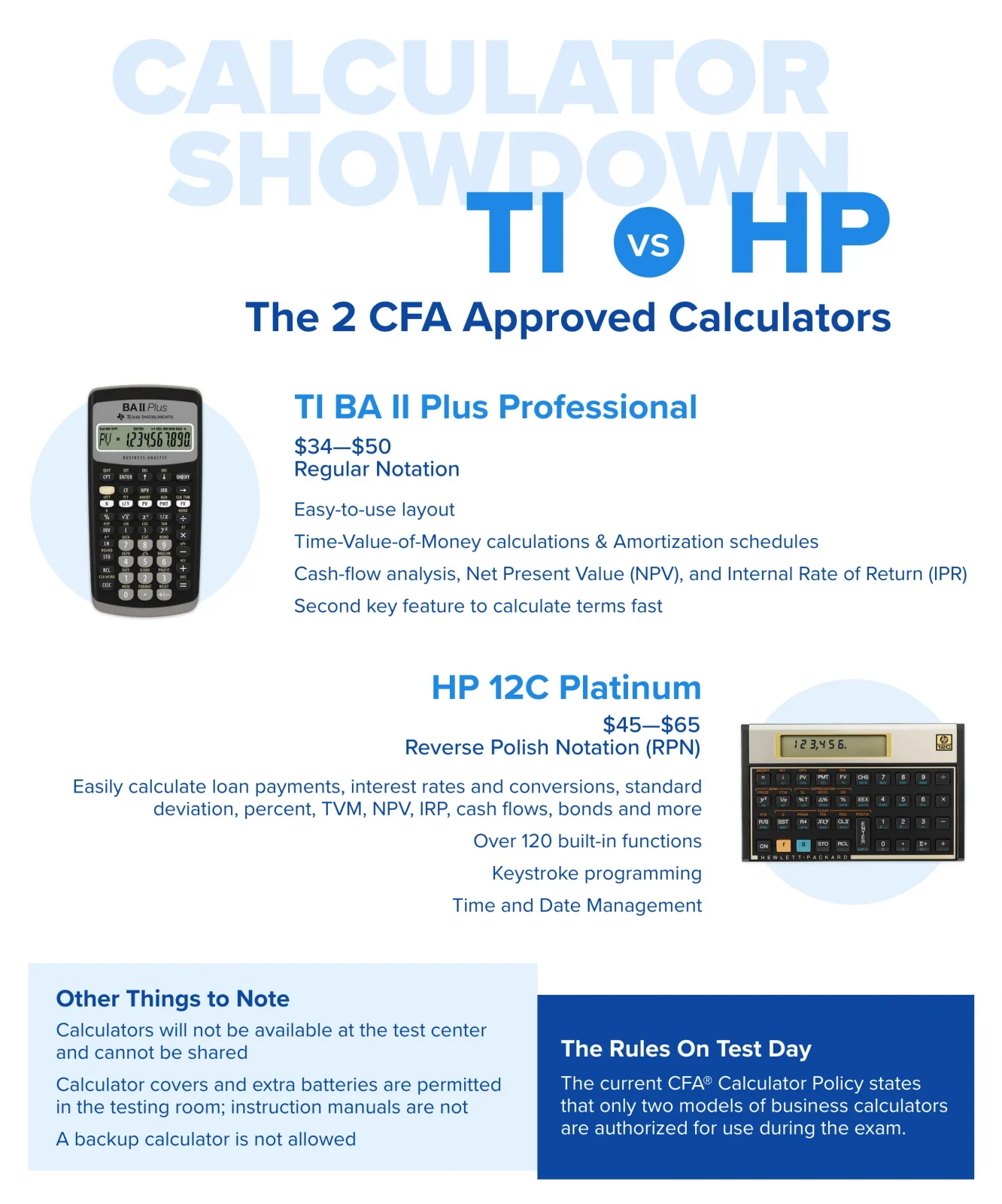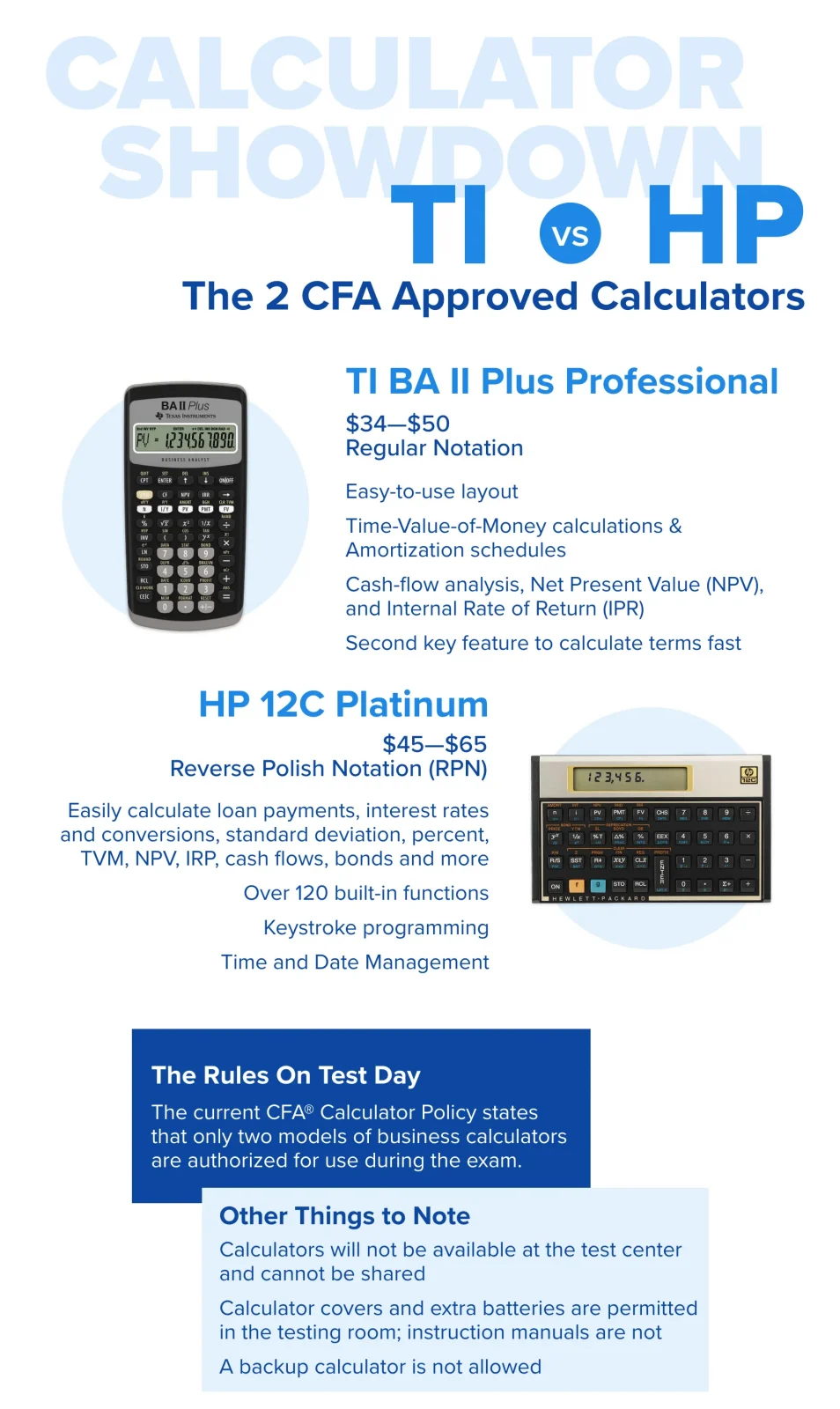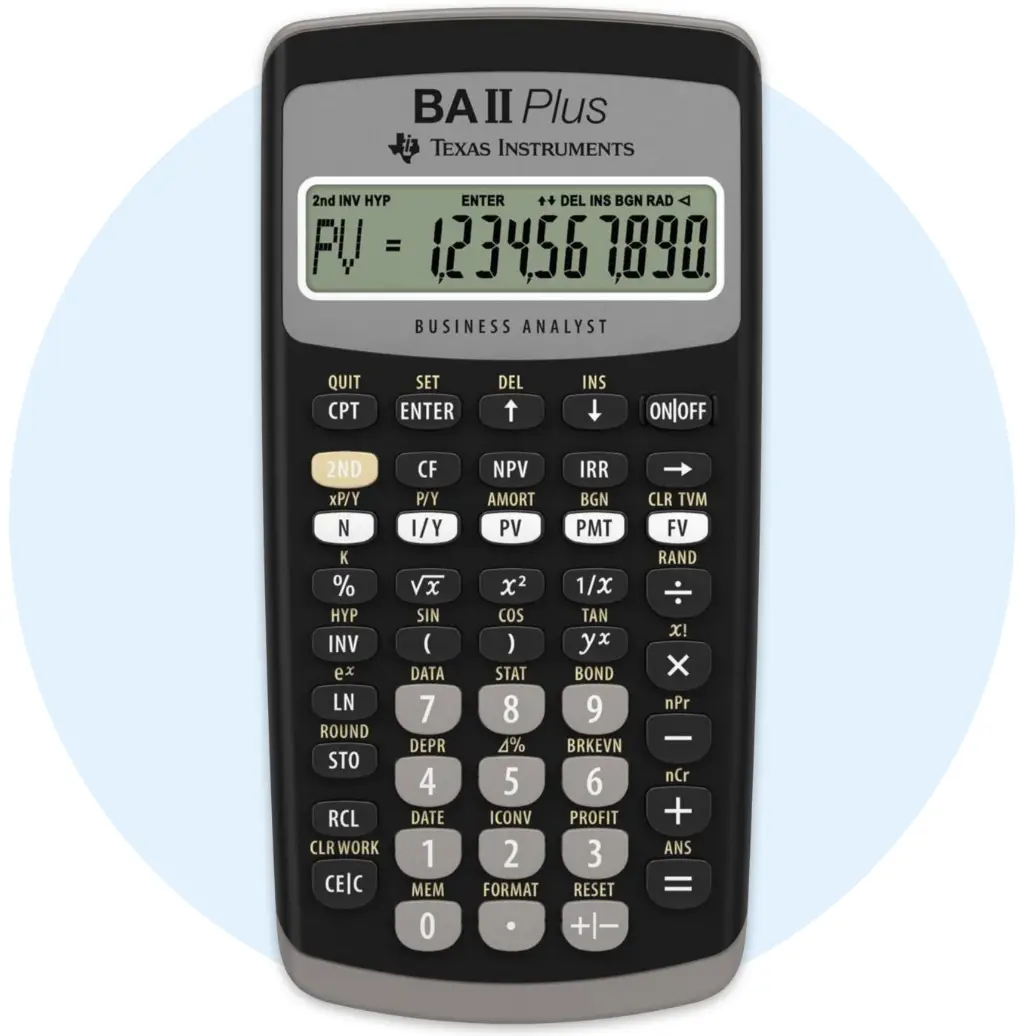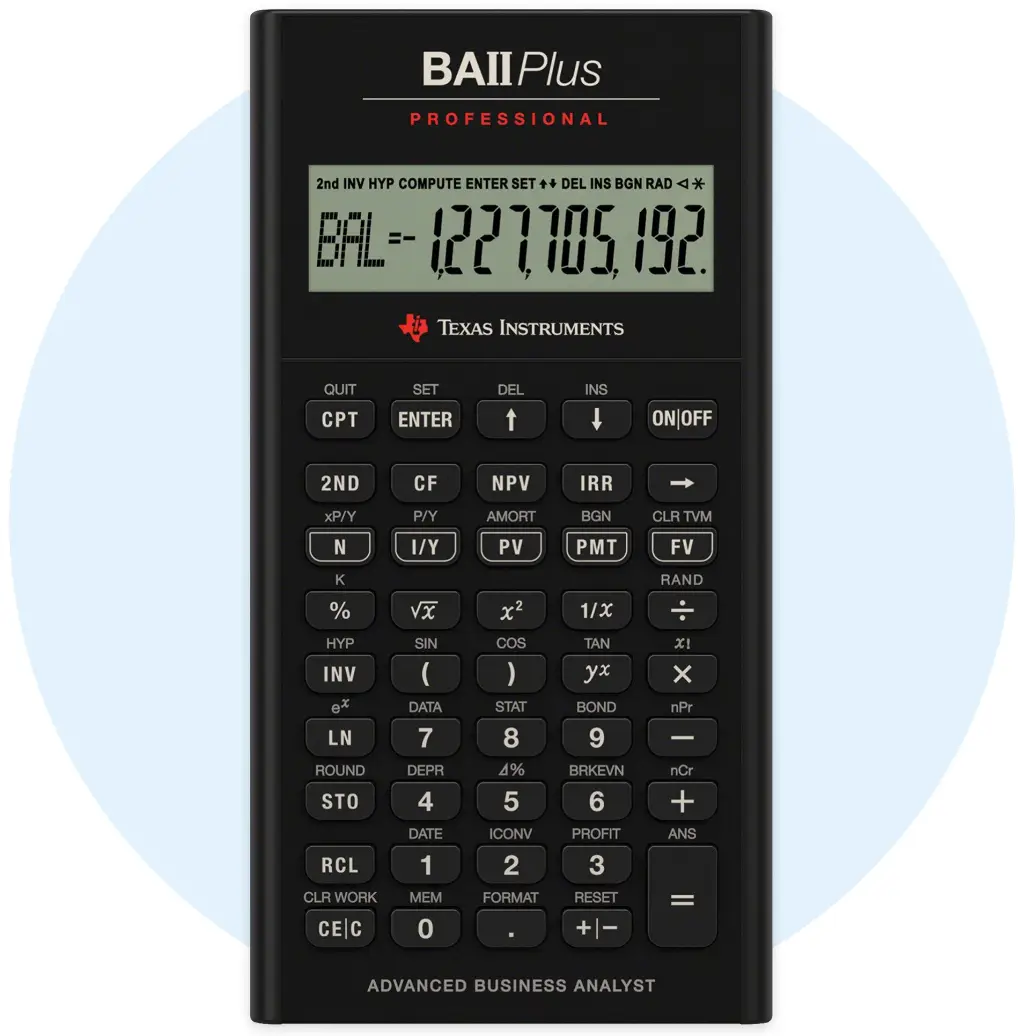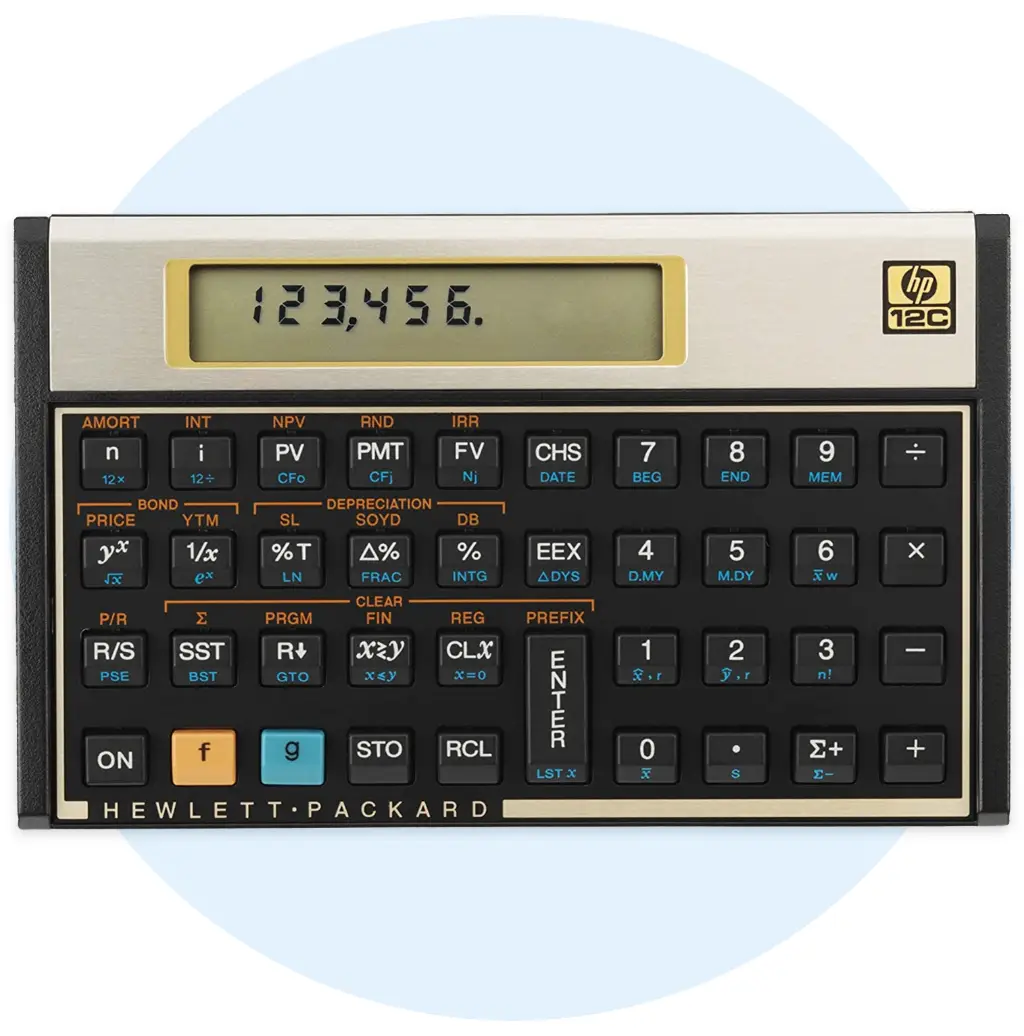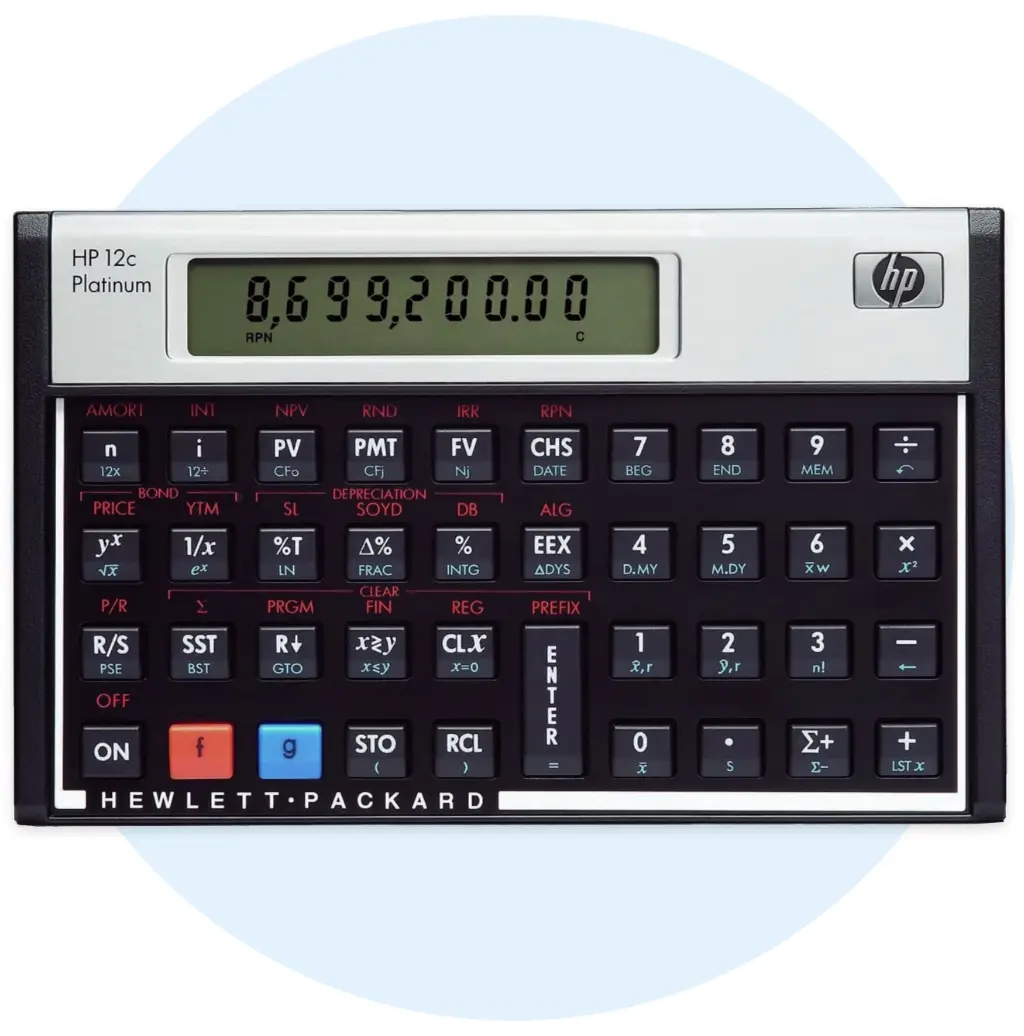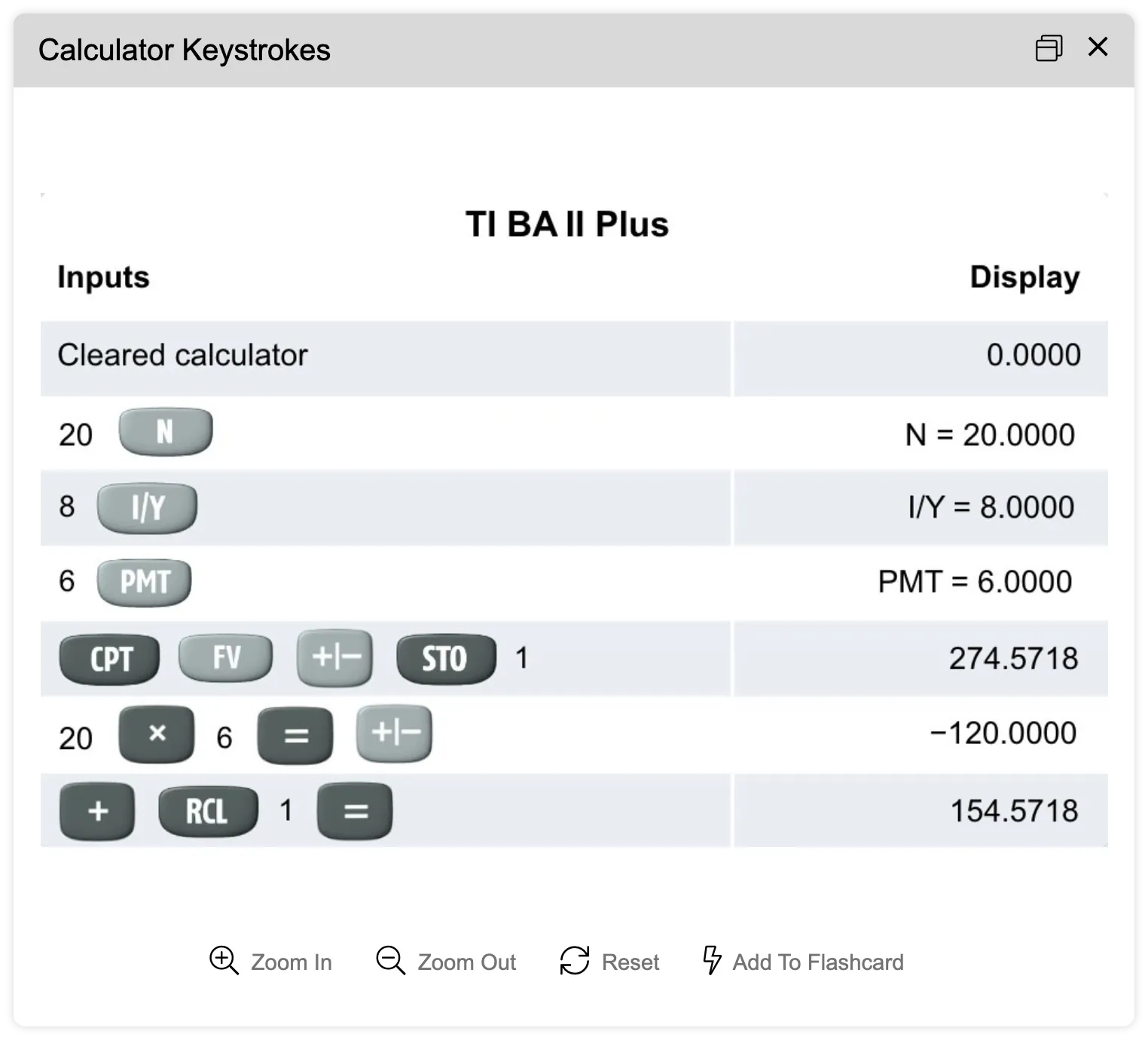CFA® Exam Calculators
Usage Policies & Approved Calculators
If you work or plan to work in the finance industry, you know the CFA designation is the gold standard. As such, the CFA exam is uncompromising on some specific criteria. Besides successfully registering for the CFA exam, paying the fee, and staying up-to-date with all the curriculum changes, ensuring you have the right calculator is one such criterion. In this case, "right” means a calculator from the CFA Institute's approved list that you are familiar with. Since CFA exams are heavy on calculation—like any other finance exam—your calculator is a device you will count on in more ways than one.
CFA Exam Calculator Usage
For those candidates studying Finance in college, you will have a head start having prior experience with financial calculators. To be successful on the CFA exams, your calculator should become a natural extension of your approach to problem-solving. Each CFA exam question must be answered efficiently and correctly, and the calculations can be complicated. One effective way to get familiar with your calculator is to use it during your CFA mock exam practice. This way, it won't be overwhelming during the actual day of the exam.
Here is an estimate of the calculator usage for each topic on the CFA Level 1 exam:
| Topic Name | Usage % |
|---|---|
| Quantitative Methods | 80-90% |
| Corporate Issuers | 40-50% |
| Equity Investments | 40-50% |
| Financial Statement Analysis | 40-50% |
| Economics | 30-40% |
| Portfolio Management | 40-50% |
| Fixed Income | 40-50% |
| Alternative Investment | 10-20% |
| Derivatives | 40-50% |
| Ethics | 0% |
Calculators are not provided at the testing center, and borrowing a calculator is strictly prohibited. Therefore, it is advised to bring your own; taking the exam without a calculator significantly reduces your chance of passing.
CFA Calculator Policy
The CFA Institute (CFAI) is very straightforward when it comes to its calculator policy for the CFA exam; only two types of calculators are permitted:
- Hewlett-Packard 12C (including the HP 12C Platinum, 12C Platinum 25th anniversary edition, 12C 30th anniversary edition, and HP 12C Prestige)
- Texas Instruments BA II Plus (includes BA II Plus Professional)
Before your CFA exam, the examination center will conduct a series of inspections to verify that everything is in order and under CFAI norms. One of them is the calculator check where candidates will be asked to present their calculator. If it is from the required list of models, the candidate will be asked to clear the memory, if any. The applicant is not permitted to borrow a calculator at any time throughout the exam, and using or possessing an unauthorized calculator during the exam may result in your exam results being null and void.
Here is a list of items that are permitted and banned in the examination center:
| Items Permitted | Items Not Permitted |
|---|---|
| Calculator covers | Non-prescribed calculators |
| Keystroke cards | Instruction manuals |
| Stray batteries | Baggage of any kind |
| A tiny screwdriver, or a pin to change the batteries |
Food items of any kind |
The CFAI also has a list of personal items that are allowed in the testing center that candidates can leverage as a checklist before their exam day.

Comparison of CFA Exam Approved Calculators
Because the CFA exam requires you to solve a slew of hard equations in a short amount of time, picking a calculator you can rely on can be confusing. The calculator you choose should be determined by your comfort with and preference between the two distinct kinds of operating systems.
Overall, the TI calculator has an edge in learning capability, especially if you are accustomed to algebraic inputs. On the other hand, the Hewlett-Packard Platinum calculator is speedier, more durable, and widely accepted as the industry standard. Regardless of which certified CFA exam calculator you use, repetition and ample practice with your calculator are essential for becoming adept enough to pass the exam.
Here are some points about each calculator, and their other approved editions, to help you choose which model is best for you.
Texas Instruments BA II Plus (including BA II Plus Professional)
This calculator series, including the original and BA II Plus Professional versions, is widely seen as a more user-friendly choice because
- It uses the Algebraic Operating System (AOS) model, which closely resembles “school” math, for ease in learning basic functions.
- It has a larger display (and bigger screen) than the HP model.
- It is less expensive than HP calculators.
This device is faster than the HP 12C, but lags behind the HP Platinum’s processing speed. It supports permutation and combination formulas. The operating system is easier to learn and is way more intuitive.
Hewlett Packard 12C
This calculator series, including the Platinum, Prestige, and anniversary editions, is the standard device for financial professionals and has been in use since 1981. Below are several key differentiators:
- It makes use of Reverse Polish Notation (RPN), a calculation system that can be counterintuitive and difficult to master.
- It can work in algebraic mode (mimics the TI).
- It does not have built-in combination and permutation functions.
- It has a slightly better battery life.
- It is smaller than the TI calculators.
- It is more expensive than the TI models.
The original model measures 5×3 inches with a small 10-character display. Its slim design includes 120 built-in stats and functions. The calculator boasts ease of use once you become accustomed to RPN.
Calculator Costs
Most candidates fail to budget for this, even though it is a relatively small amount of $54 on average. Remember to double the cost listed below if you prefer to bring a spare calculator (only the ones approved by the CFAI) as a backup during exams. Also, remember that you will use these calculators on all three exams and into your career, so the actual cost is nominal.
Here are the prices of calculators approved by the CFAI:
| Approximate Calculator Costs | |
|---|---|
| Texas Instruments BA II Plus | $34 |
| Texas Instruments BA II Plus Professional | $54 |
| HP12C | $64 |
| HP12C Platinum | $62 |
CFA Calculator Tips and Tricks
Learning how to use your calculator well before the exam will not only give you an edge in time management but also reduce your calculation errors by a significant margin. Calculator functions that can help you save time by eliminating the need to memorize formulas include
- CF for Cashflow functions
- NPV (Net Present Value)
- IRR
- TVM
- X! To calculate exponential functions
- Data/Stat; quick for mean and StdDev of a sample/population
- Bond; for YTM and ModDur
If you are using the TI BA II calculator, here are some additional functionality tips that can come in handy.
Increase to 9 Decimal Places
By selecting the nine decimal place setting on your calculator, you can reduce the number of decimal places shown to just those required. For example, a 4-decimal place setting would display the value ∣4.5∣ as ∣4.5000∣, while a floating decimal format will only display the value to the required number of decimal places, in this case, ∣4.5∣.
Set the Period Per Year to 1
Set "P/Y," which means "period per year" = 1. Recent BA II Plus calculators have a default value of 1, although many older machines have a value of 12. This is to ensure that the settings are correct for most of the computations required in the CFA test curriculum.
Since the CFAI protocol requires candidates to clear their calculator memory before sitting for the exam, here are some clear entry functions to keep in mind:
- CE∣C button: Pressing CE∣C once clears the previous entry
- CE∣C button: Pressing CE∣C twice clears everything
Here's a comprehensive and visual TI BA plus guide and HP Model guide to help you get more familiar with both models.
Calculator Keystrokes (Only with UWorld)
Regardless of the type of interest—simple, compound, cash flow, amortization, or conversions—you must learn how to obtain the correct answer as quickly as possible. A distinct advantage of the UWorld CFA product is the Calculator Keystrokes feature. In our QBank, you can choose to review the calculator steps in solving the problem. We demonstrate the precise keystrokes for both of the accepted calculators for each of our questions that call for a calculator. You can quickly pick up the idea and use muscle memory to arrive at the correct response.

Frequently Asked Questions
Can I take two calculators to the CFA exam?
Does the CFA Level 1 exam require a calculator?
Which calculator is best for the CFA exam?
Read More About the CFA Exam
Planning to register for the CFA exam? Visit this quick guide for detailed info on everything you need to know before attempting the exam.
Need a concise, one-stop destination for a better understanding and retention of all the formulas for the CFA exams? Here’s all you need to step up your calculation game
Are you looking to understand whether a CFA designation will benefit your career? Here is all you need to know about CFA job opportunities to get started immediately.
